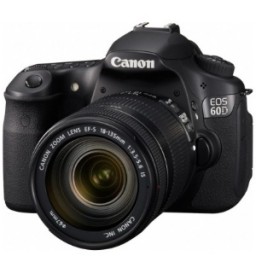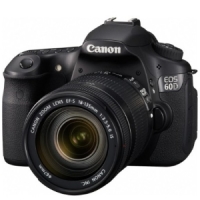DSLR, or digital single lens reflex, is a type of digital camera that’s typically a grade-above the more mainstream Point-and-Shoot compact digital camera, as well as what are known as advanced digital cameras (aka ‘bridge-cams’). To help you grasp the concept of the DSLR, let’s first take a basic look at the original SLR.
The SLR has long been the only type of camera advanced amateurs and professionals would use and, largely, still is. The concept is fairly simple: most film SLR’s have an interchangeable lens, a semi-automatic mirror, pentaprism, AF sensor, shutter, and view-finder (among other, more technical items). Most used (notice the past tense used here–as film-based SLR’s are practically extinct) a 35mm-based film and could be outfitted with a large array of autofocus (AF) and manual lenses.
Fast-forward to the present: DSLR cameras have largely replaced the venerable SLR. Digital SLR’s use many of the same concepts (especially the interchangeable lens concept) and even some of the same mechanical parts as SLR’s, but employ much more sophisticated hardware such as computerized processors, CMOS circuits, and an LCD viewfinder.
Why Photographers Prefer DSLR’s to Compact Digicams and Advanced Point-and-Shoot’s

There’s several reasons why professional photographers, as well as many advanced amateur photographers, insist on the DSLR camera:
- The DSLR is interchangeable with a variety of types of lenses; other digital cameras use a fixed-lens.
- DSLR’s typically offer better performance by way of autofocus latency, frame rates (measured in FPS, or frames per second), and reduced shutter lag.
- DSLR’s offer larger image censors, as well as optical viewfinders – both of which are more than ideal for low-light shooting or fast action sequences.
- They tend to employ controls like the old-fashioned rotary dials or rings, which makes it easier to control the settings and other functions—whereas point-and-shoot’s tend to implement the majority of the settings controls and whatnot all into the digital menu.
- DSLR’s typically offer extended focal lengths for matching field-of-views. This further enables creativity by allowing photographers to produce depth-of-field effects.
- They’re also far more modifiable than compact point-and-shoots—with many models supporting the addition of accessories like external flashes and battery grips.
Potential Tradeoffs
For folks accustomed to the convenience and portability of fixed-lens digital cameras, DSLR’s (especially the high-end ones) may have a few tradeoffs. Perhaps palpably, they’re going to cost more than their simpler cousins. In terms of ergonomics and portability, DSLR’s are typically a little bulkier than fixed-lens varieties; high-end DSLR’s are notoriously bulky and can be significantly heavier. Plus, most DSLR’s do not come with video-recording capabilities—mainly, one could surmise, because advanced photographers want to do one thing and one thing only: take pictures.
For those wanting a more advanced point-and-shoot camera, but aren’t quite “DSLR-ready” yet, consider a ‘bridge’ digital camera. This intermediary camera doesn’t have an interchangeable lens, but usually does employ a larger zoom range and more sophisticated lens than a simple point-and-shoot.
